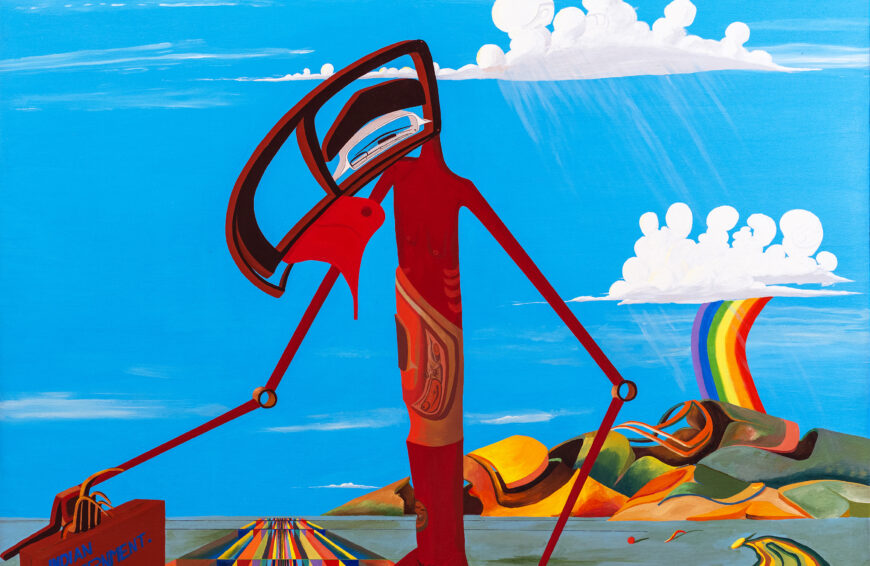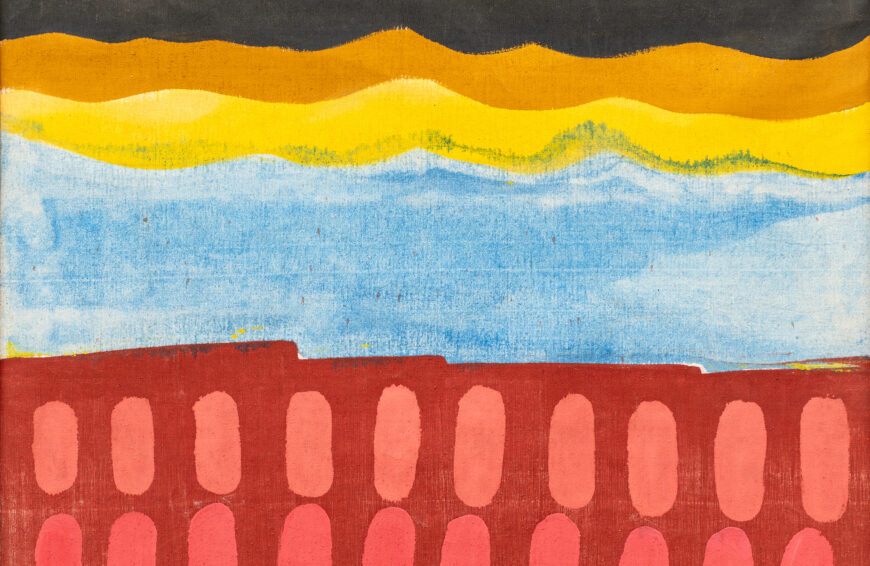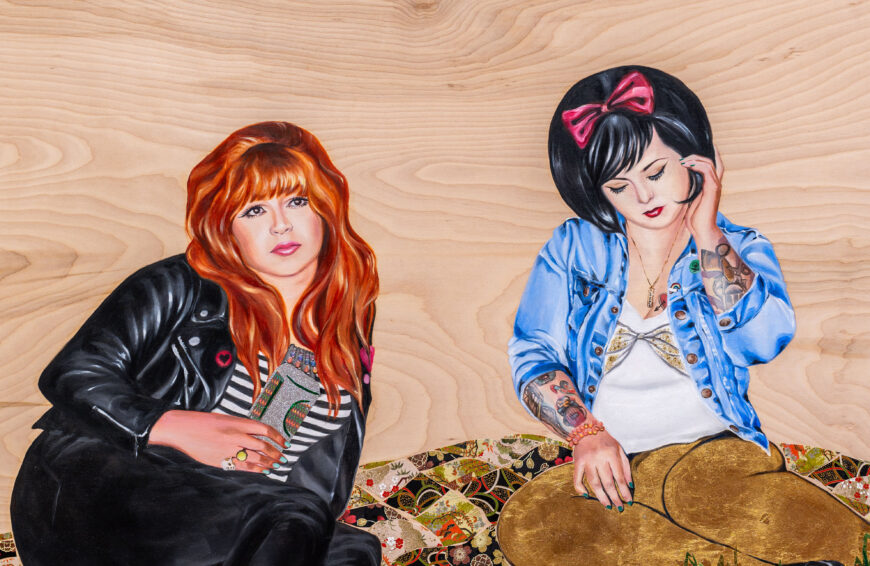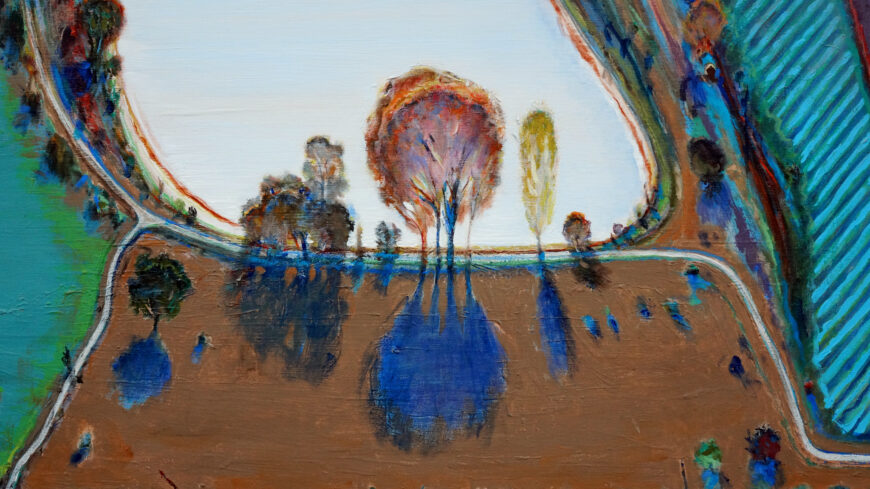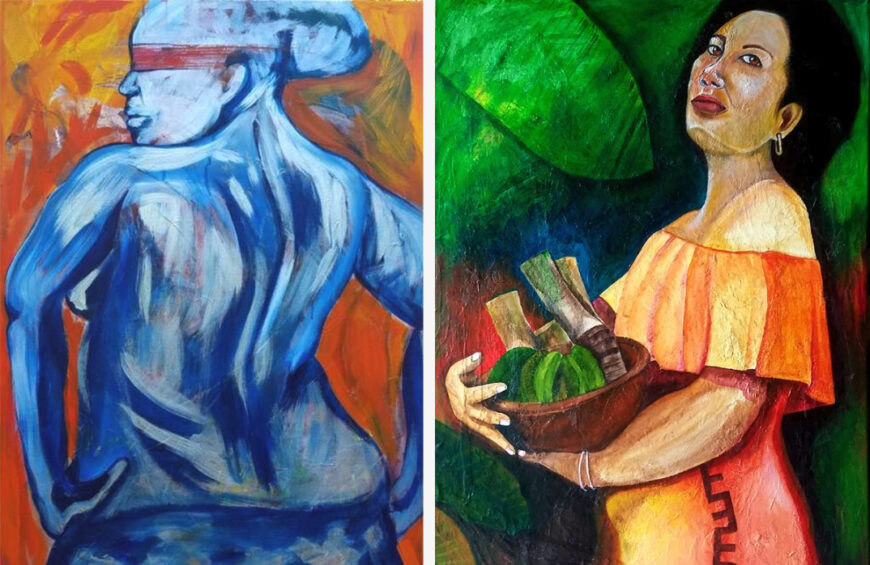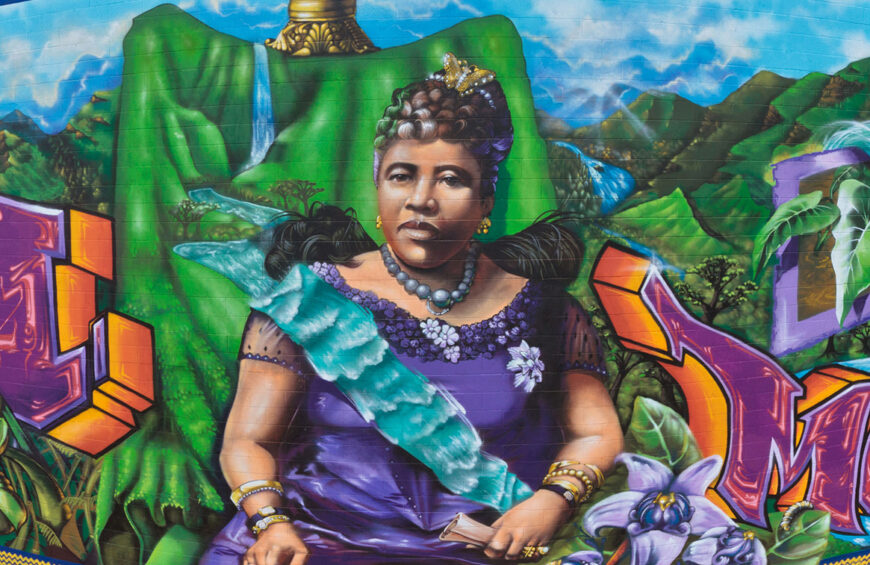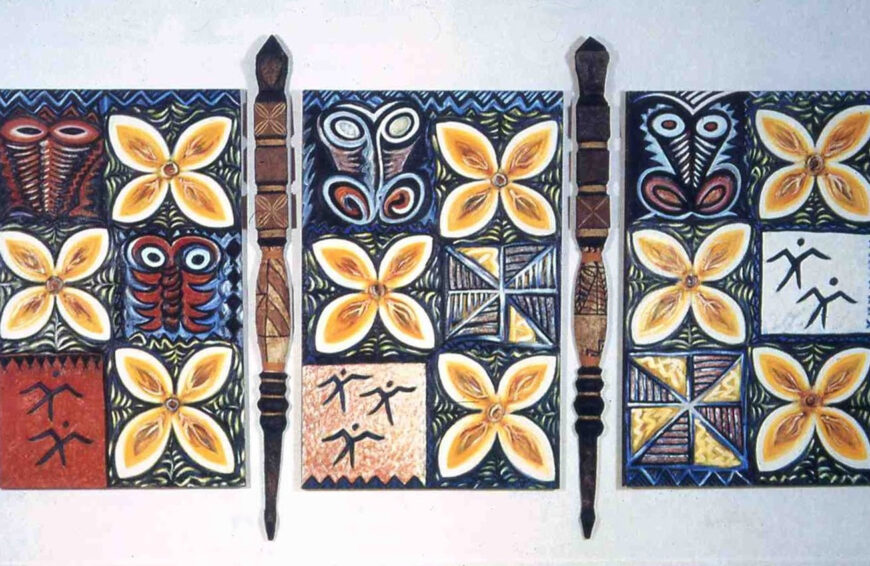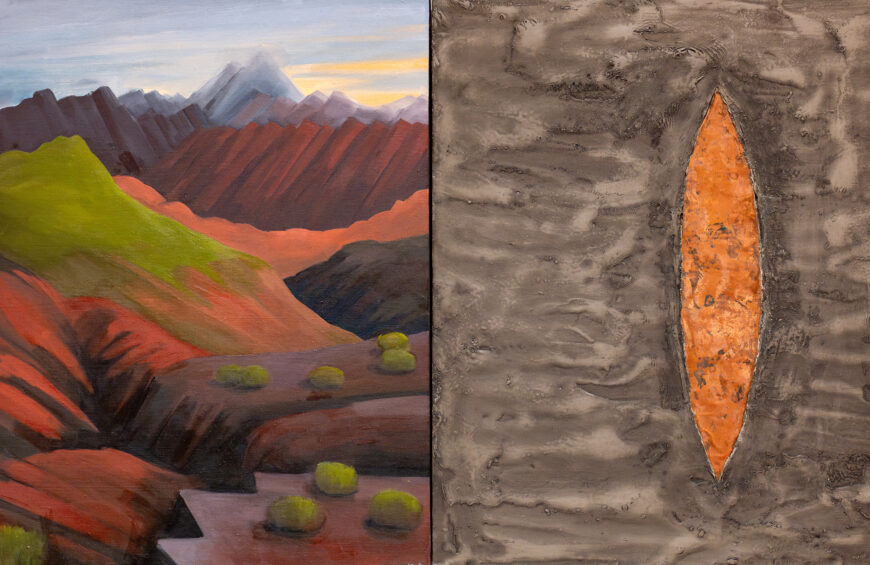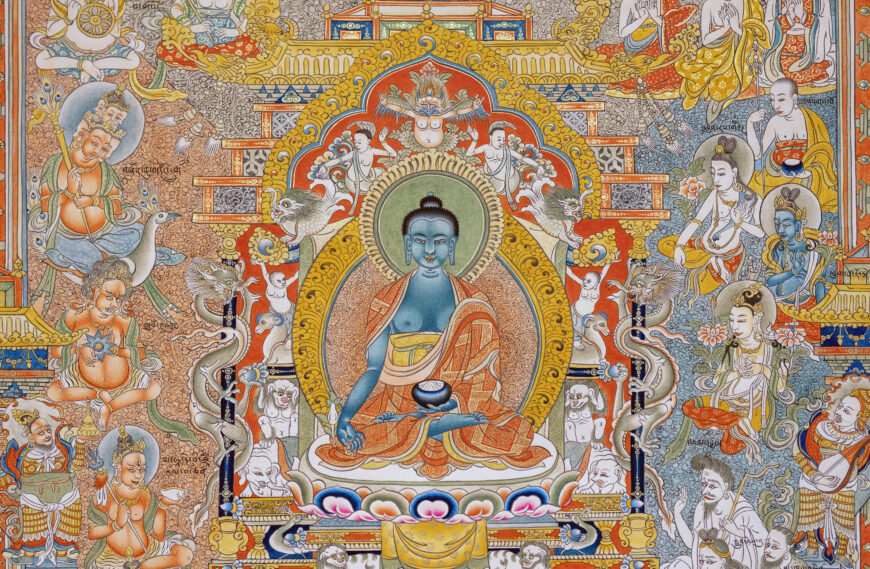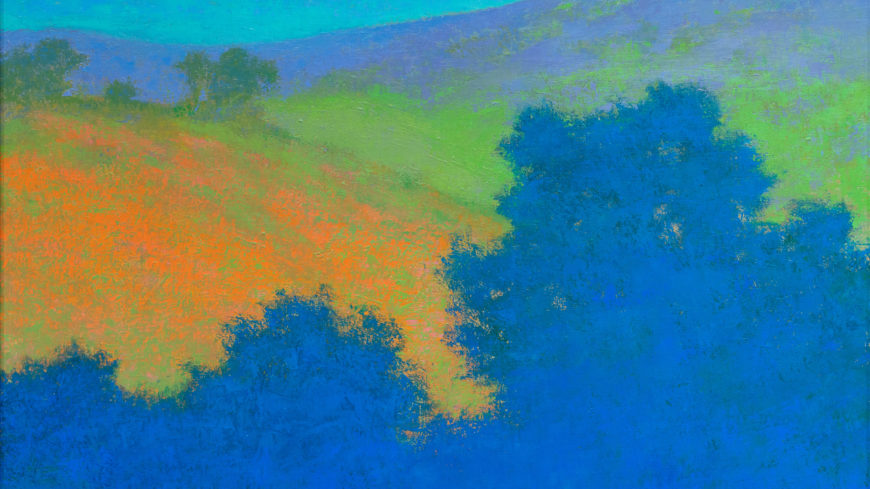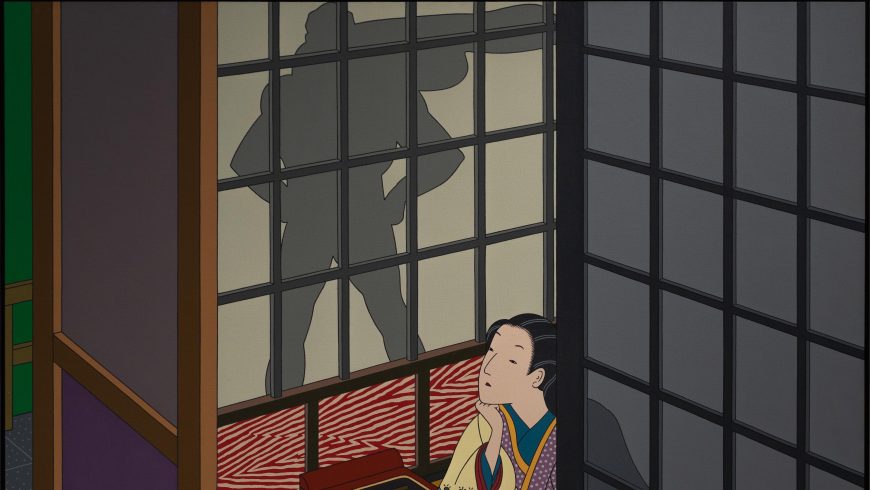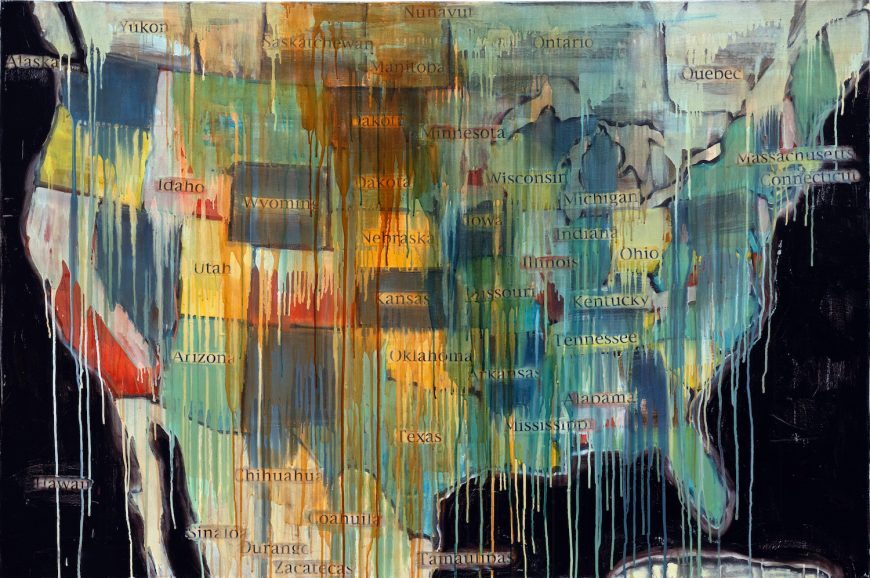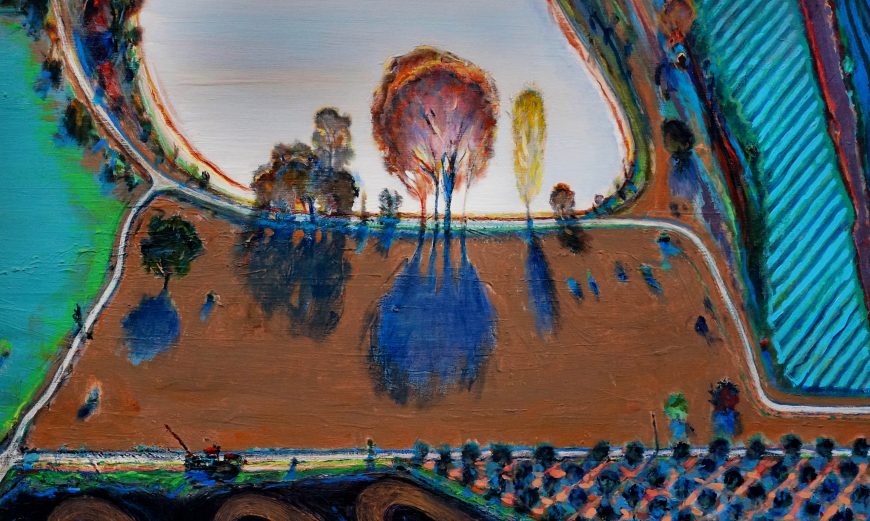Teraoka draws on Japan’s brilliant history of art and kabuki theatre to creating beauty from heart-rending tragedy.
Masami Teraoka, American Kabuki (Oishiiwa), 1986, watercolor and sumi ink on paper mounted on a four-panel screen, 196.9 x 393.7 x 3 cm (de Young Museum, Fine Arts Museums of San Francisco), © Masami Teraoka. Seeing America video. Speakers: Emma Acker, Associate Curator of American Art, Fine Arts Museums of San Francisco and Steven Zucker


